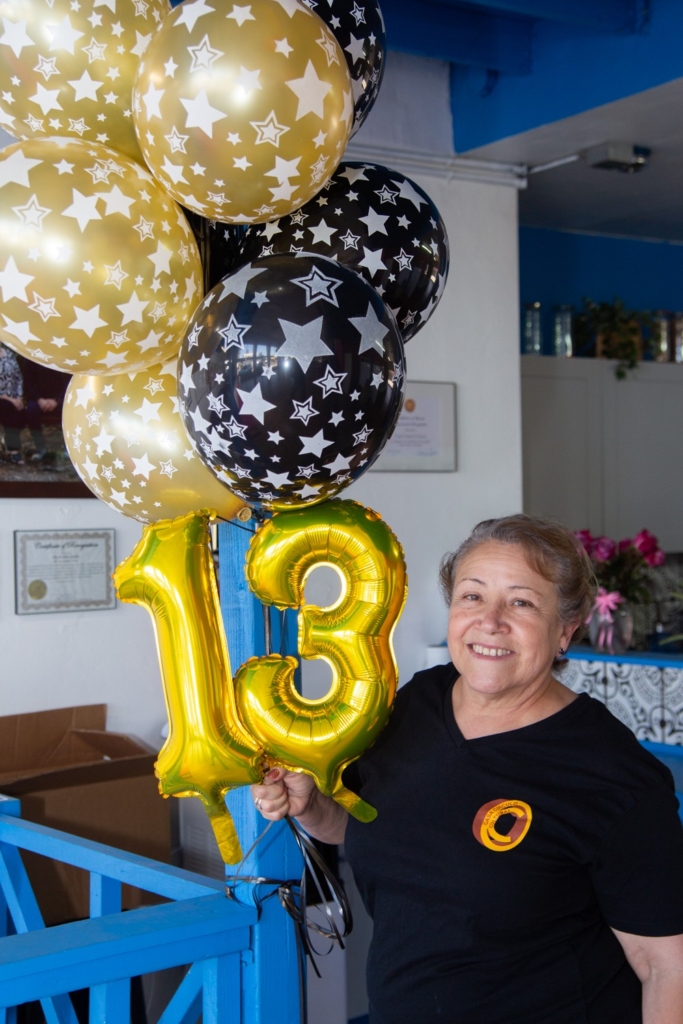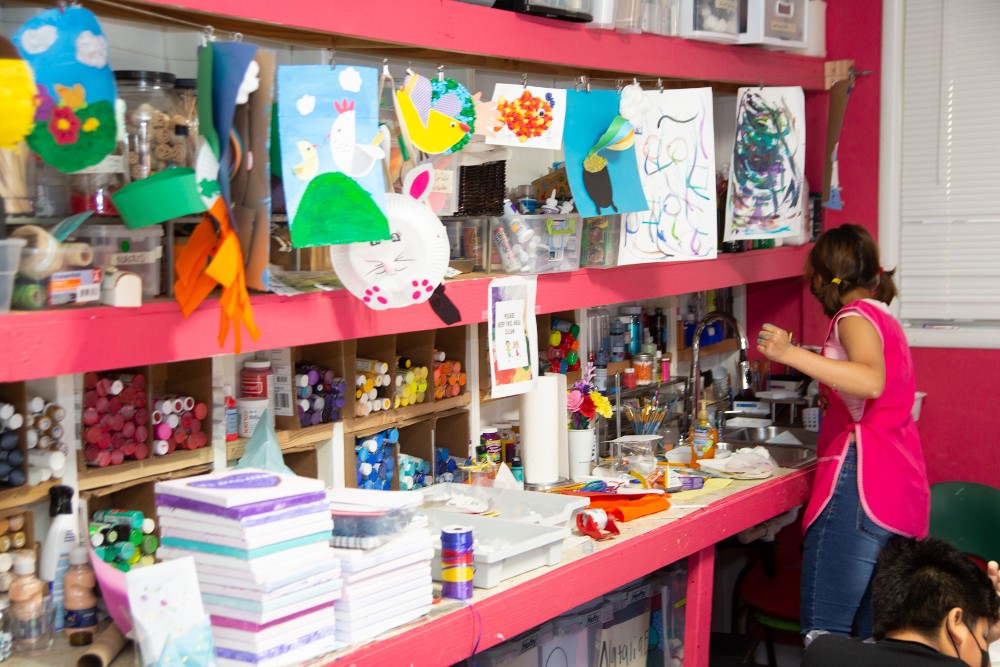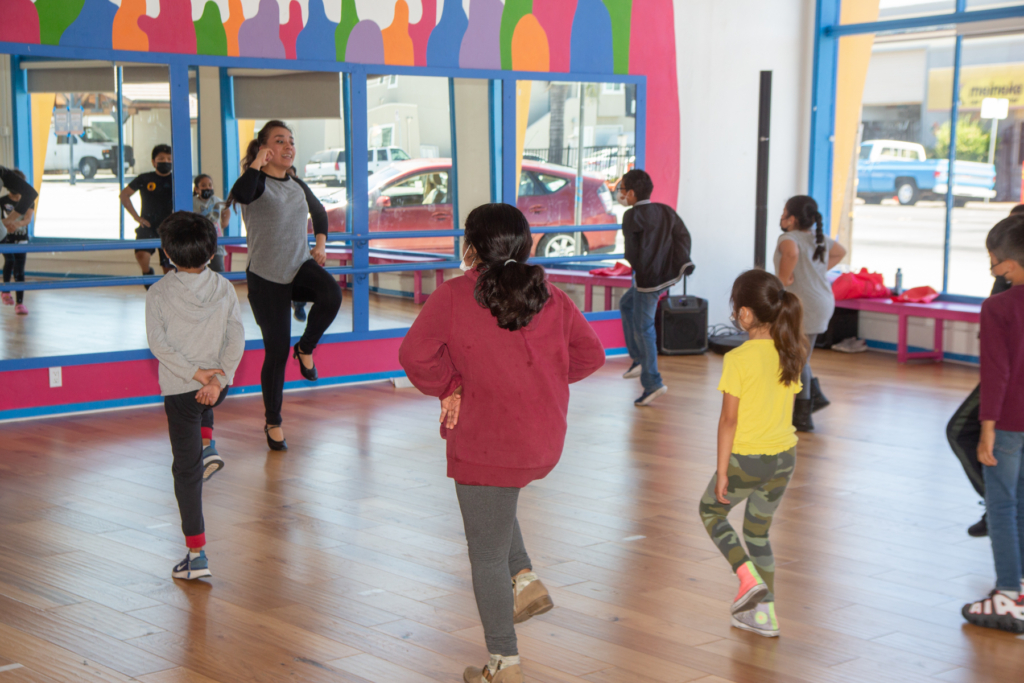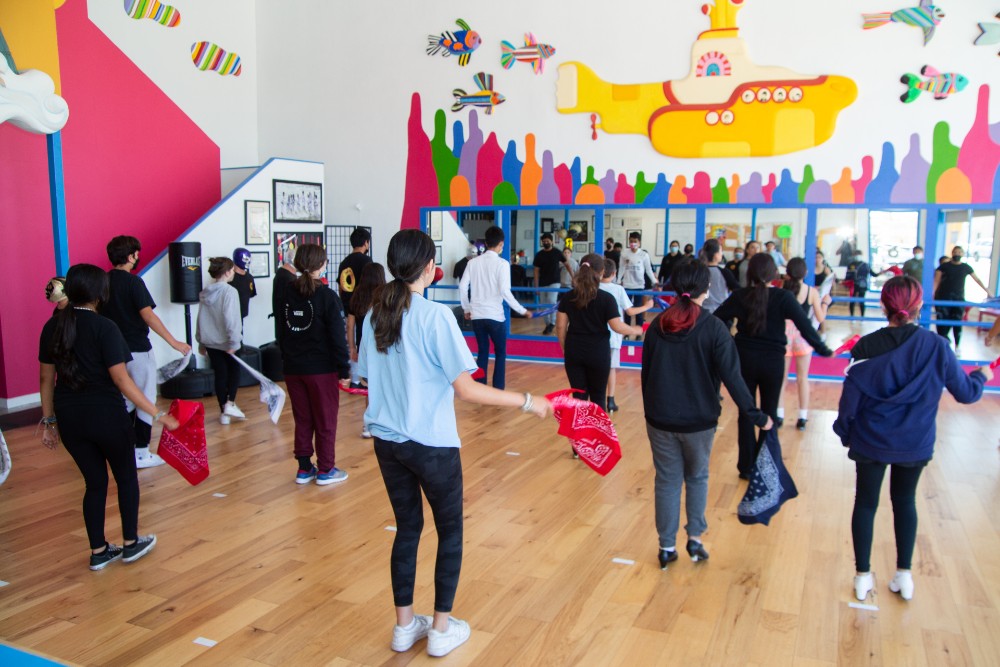Culture keeper, youth steward, exercise emporium, arts center — many nouns attach to the business of Casa Circulo Cultural on Middlefield Road south of Costco in Redwood City.
One is of particular note: Bargain.
Aided by a partial sponsorship from the San Mateo County Sheriff’s Office, the nonprofit organization offers low-cost classes in art, music, video production, salsa and Folklorico dancing, sewing, boxing, taekwondo, cooking, gardening, Spanish, English and a potpourri of creative endeavors for youth and adults ages 5 to 90.
Perhaps of greatest renown is how, in just a decade, Casa Circulo Cultural has elevated the Mexican celebration of Día de los Muertos — the Day of the Dead — to a communitywide event in Redwood City. By now, most residents understand that Día de los Muertos is a joyful festival of the living that’s rooted in Mayan, Aztecan and Olmec tradition dating back a thousand years and more. (The Olmecs, who settled the tropical lowlands of Mexico, are credited with Mesoamerica’s first major civilization.)
For the center’s founder, Verónica Escámez, the culture of “Día” is a font of respect, the spring from which all things flow, a current of blessings for ancestors, the living, friends, family and community, whatever the ethnic makeup of those who celebrate it. For example, the annual November 1 and 2 Día de los Muertos festivities in Courthouse Square and the adjoining musem of the San Mateo County Historical Association have featured Chinese and Russian altars honoring and nourishing the dead.
A Continuing Evolution
Casa Circulo Cultural has evolved tremendously since it began as a theater group in 2009. “The adults who came Mondays, Wednesdays and Fridays started doing ornaments for the band,” Escámez recalls. “Little by little, they started doing dance classes and – poof! — now we are there.”
Escámez says every Día celebration displays what clients have learned throughout the previous year. Art and painting classes incorporate masks and decorations. Dance rehearsals include Folklorico routines typical of Mexican culture performed at Día events. Sewing courses teach technique for making costumes and props. And video production builds skills for documenting the events.
—
This story appeared in the July edition of Climate Magazine.
—
The purposeful economy of effort helps explain the outsized influence of Casa Circulo Cultural. San Francisco is now part of its sphere. Some 15 years ago, San Francisco Symphony Curator Martha Rodríguez-Salazar helped present the orchestra’s first Día de los Muertos celebration. She continued to expand it and brought in more community partners, which 11 years ago came to include Casa Circulo Cultural’s dancers and artists.
The Redwood City organization is now at the heart of the symphony’s Día events. On its website, the ensemble describes its partner as “a vibrant, multi-disciplinary art organization dedicated to creating cultural programming reflective of the experiences of the Latino communities of the San Francisco Bay Area.”
On the day of the symphony’s performance, youth and adults from Casa Circulo Cultural march — in regalia they made themselves — in the Día procession down San Francisco’s Grove Street. Handmade decorations from Casa Circulo Cultural’s clients decorate Davies Symphony Hall’s windows and walls, as do oversized masks, skulls and other objects painted in the style of 19th–century Mexican engraver José Guadalupe Posada. In the past, the symphony’s patrons have also been offered a photo op in Casa Circulo Cultural’s “Catrines y Catrinas” picture booth, a clever deployment of painting, sculptural, sewing and photographic skills learned at the center. (The Spanish word “catrine” refers to a well-dressed person. “Catrina” describes an elegantly attired skeleton.)

Connection with a Famous Sculptor
Prominent among the sculptures every year at the concert hall are several by Mexico City-born artist Fernando Escartiz, who now lives locally. Last fall, hordes of visitors photographed his “We Are Stardust” Día installation, a monumental sculptural artwork that made it look as if a meteorite had smashed into the roof of the art kiosk in Courthouse Square.
Escartiz’s intent was to capture the instant of impact and destruction. It demonstrated, he told the Almanac newspaper, that “there has to be death for there to be life.”
Widely admired in Mexico, Escartiz is Casa Circulo Cultural’s primary artist. His presence at the center is impossible to miss. High on an interior wall, bas reliefs of colorful fish are arranged around an easily recognized replication of the underwater vessel from the movie and song immortalized by the Beatles. The message is obvious: We all live in a yellow submarine.

A Family Enterprise
Perhaps it made a difference that it was his mother who asked Escartiz to volunteer. As the doña of her family — and Casa Circulo Cultural — Verónica Escámez can be persuasive. Her invitations are particularly compelling to relatives, so much so that at the center, “relative” and “volunteer” are practically synonymous. And if Casa Circulo Cultural seems to operate in creativity overdrive, it’s because the family and other staff members are hyper-creative.
Anna Lee Mraz Bartra is Escámez’s daughter-in-law. She holds a doctorate in sociology, and was a 2020-21 fellow in the Research Justice at the Intersections program at Mills College, which was scheduled to complete its planned merger with Northeastern University on July 1. She’s also CEO of Peninsula 360 Press, a news outlet for the Latino community, and teaches media classes there to children and adults. Mraz Bartra also recently graced Escámez with a granddaughter.
Peninsula 360 Press began in 2020. It was founded by one of Escámez’s sons, journalist Manuel Ortiz Escámez, who is also a board member of Casa Circulo Cultural — unpaid, as are all the organization’s directors. Administrative advisor and fellow board member Florence Ortiz is Escámez’s granddaughter, and program aide Sofia Ortiz is Escámez’s cousin.
Another son, taekwondo instructor Gerardo Ortiz, teaches adults and also children as young as five. His teams have advanced to competitive levels, and his martial-arts students have harvested many gold medals.
Others — not related to Escámez — at Casa Circulo Cultural include Arturo Samayoa, who teaches salsa dancing; Roxana Escamilla, Sonia Martinez and Hanny Crespo, art; Asael Merlin, piano; Andres Garcia, guitar; Roberto Cruz, singing; Gretel Gagnon, cooking and gardening; Magaly Lopez, sewing; Asminda Zavala, embroidery; Daniel Saldivar, boxing; and Wendy Segovia, program coordinator.
But family started it all. And, like many stories of familial enterprise, this one began at a dead end.
Starting Over
In late 2008, Escámez had lost her job working for an immigration attorney in San Francisco. In scarcely a moment, she had nowhere to go and nothing to do. In Mexico City, she had long been a teacher and principal in a government-sponsored school. (She came to the U.S. in 1989.) Now, in Redwood City, she wanted to have fun. In May 2009, she started a theater group in her garage for “people in my community who normally have nothing to do but work.”
Often, it was loud — and that was a problem. “Noise,” she laughs, “was something my neighbors did not want to hear. So they started sending the police. We would be rehearsing to the point where we knew the police would come, (and then) we started singing ‘Happy Birthday.’”

In December 2009, she approached Redwood City Community Services Manager Bruce Utecht about using the old Veterans Memorial Senior Center on Madison Avenue for theater space. She got it in exchange for helping with the bingo games there. Two years later, Casa Circulo Cultural moved to a warehouse on East Bayshore Road in Redwood City. Then, in June of last year, the organization used small grants and community help to acquire its new place in North Fair Oaks.
Of the center’s evolution, Escámez says, “Adults started bringing kids to rehearsal because they didn’t have a place to take them. I thought, ‘Well, let’s see what we can do.’ So we did something with the kids, too. Saturdays, we started giving classes. We had adults, we had kids, and one thing led to the other.
“Fortunately, we had a lot of volunteers,” she continues. “One wanted to teach art, one wanted to teach dance, and one of my sons did sculptures, and, well, we just got together. Since then, we’ve been growing and growing.
Teaching Leadership
“Our principal thing is, through the arts, to get kids involved in the community and inspire them to be leaders,” Escámez says. “The Hispanic community is a little bit more shy than other cultures. So, for example, if we have an event, usually our emcees are the kids.”
The center’s approach to language additionally reflects its mission to bring families and cultures together.
“All our kids speak English,” Escámez notes. “When they are around 11 years old, they start losing the connection with parents that don’t speak English.” Thus, kids at the center receive instruction in Spanish, and adults, in English. “We try to do the connection between the two cultures,” Escámez says, “and make the little ones feel proud of where they come from.”
The approach is not bi-cultural. It’s not cross-cultural. It’s Casa Circulo Cultural-cultural. As much as the center cultivates awareness of the Day of the Dead, it also respects other traditions. Beyond honoring Día de los Muertos, kids also celebrate Halloween.
“They need to know all their cultures,” Escámez says. “They need to know all their traditions, too, so they know the difference.”






